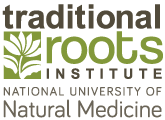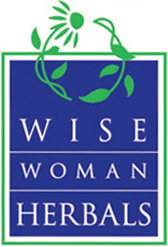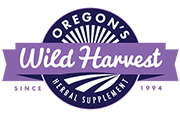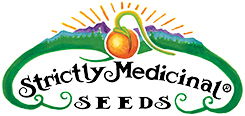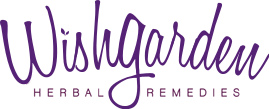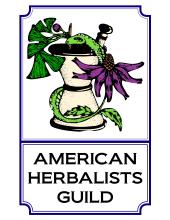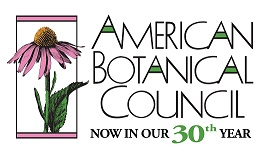Paul Bergner
Herban Legends and Clinical Pearls
An Herban Legend is a persistent, widely and firmly held belief about a plant and its medicinal effects which is not true. The origin of the Legend or its rationale is obscure or forgotten, and is usually based on misinterpretation of some fact of science or tradition. It is repeated, believed, and repeated again from textbook to textbook, teacher to teacher, article to article, and herbalist to herbalist, across a generation, and guides regular practice. A large number of such Legends, most arising in the last 30 years, infect the modern North American materia medica and weaken the effectiveness of our clinical practice. Each of the herbs, however, have some potent “clinical pearl” unrelated to the legend itself. We will discuss Herban Legends and Clinical Pearls for devil’s club (Oplopanax), Lomatium, saw palmetto (Serenoa), feverfew (Tanacetum), juniper (Juniperus), Lobelia, Echinacea, goldenseal (Hydrastis) and wild yam (Dioscorea).
Amazing Physiological Facts That Will Change Your Practice of Herbalism
We will describe little-known, but well-established facts about human physiology, each of which either demonstrates the wisdom and relevance of some traditional herbal practices in herbal medicine, or will change the way you use herbs with patients now. Subtopics include the healing power of mucus; the urinary alkaline tide; the speed of kidney filtration; the gut wall as lymphoid tissue; connective tissue as immunological organ; plasma protein re-circulation in the lymph; and transdermal absorption of botanical medicines. In each case the relevance of the physiology to one or more categories of herbal forms or actions will be described. Categories of herbs will include expectorants, demulcents, vulneraries, anti-inflammatories, lymphatics and alteratives, as well as comparison of tinctures, teas and topical applications.
Richo Cech
Delights of Diversity, Medicinal Trees on the Landscape: Zero Medicine Miles
Join Richo Cech on a photographic tour through his gardens at Strictly Medicinal Seeds in Williams, Oregon. Participants will learn about the medicinal uses, horticulture and landscaping potential of elderberry (Sambucus nigra), hawthorn (Crataegus monogyna), linden (Tilia cordata), witch hazel (Hamamelis virginiana), slippery elm (Ulmus rubra), spice bush (Lindera benzoin), horse chestnut (Aesculus hippocastanum) and Eleutherococcus (E. senticosus). There will also be some discussion of herbaceous medicinal plants that grow well in the shade of these trees.
Bevin Clare
Sambucus: A Global Medicine of Substance and Magic
Take a journey to discover the Sambucus genera and their application, research, and lore around the globe with specific clinical prescriptions as well as a presentation rich with the story and lore of these globally embraced plants.
Beyond the Bottle: Botanicals as Partners in Practice
Explore the use of medicinal plants in daily, dietary preparations with therapeutic targets. Through a case-study model, we will review the use of plants in medicinal preparations such as soups, pestos, beverages, and even healing desserts. As herbalists, we have the option to move beyond the bottle to a sensory approach to herbal medicine that can fit seamlessly into life and practice.
Sussanna Czeranko
Herbs Used in Hydrotherapy
Herbalists and naturopathic doctors have long expanded their armamentarium to embrace the powerful constituents that plants offer. Recognizing and promoting always the inherent natural partnership between plants and water, these botanical medicine experts use specific herbs alongside numerous therapeutic options, including hydrotherapy, for patients suffering from diseases that were not ameliorated by the drug cures of their day. We will be exploring specific herbal remedies that have been used historically.
Catherine Hunziker
Confessions of a Radical Herbalist
Share in the stories, insights, philosophy and formulating strategy of an activist turned herbalist, turned entrepreneur, turned activist again. Take a fresh look at the difference between pharmaceuticals and ‘whole herb’ extracts, and why that matters. Help people rediscover the formidable strength, safety and beauty of whole plant medicine as it contributes towards a more sustainable future for generations to come.
Elise Krohn
Native Infusion: Diabetes Prevention Through Traditional Teas
Simply changing what we drink can have a profound impact on our health. In this hands-on workshop Elise Krohn will share knowledge from Native Infusion: Rethink Your Drink. Elise co-developed the curriculum and educational resources with Muckleshoot Traditional Plants Program Director Valerie Segrest through First Nations Development Institute to promote healthy and culturally rooted beverages. Elise will share specific seasonal plants that can be prepared as flavored waters and teas including evergreen tree tips, dandelion, hawthorn, huckleberry, nettle, strawberry and rose. Strategies for educating people about the health impacts of sugary drinks will be included, as well as time to sample teas!
Wild Rose: The Universal Medicine
Rose holds mythic status. Its teachings, medicinal and nutritional value and culinary use are celebrated all over the world. Join Elise Krohn as she shares stories and herbal perspectives about this precious plant. Participants will learn how to identify, harvest and use local wild rose, as well as other types of roses. Elise will share therapeutic actions for rose as well as techniques for making several medicines including tea, infused honey, infused oil, lip balm and easy rosehip jam.
Greta de la Montagne
Herbal First Aid
Herbal First Aid takes advantage of widely available materials such as kitchen spices, weeds and wild plants. Knowing which useful remedies are often close at hand can be empowering to communities, especially those facing economic challenges, a catastrophic natural disaster, or just simply those who wish to live closer to the earth and focus on resilience and self sufficiency. This class will cover basic herbal first aid skills and assessment tools gathered from Greta’s 26 years of herbal first aid and healthcare practice.
Healthy Grieving Guide to Death and Dying
Greta de la Montagne takes a firsthand, intimate look at the experience of grief and offers a framework of strategies to promote a natural, healthy and sustainable process. Greta applies decades of experience as a clinical herbalist and Ayurvedic practitioner to outline the stages of grief and provide an overview of foods and herbal formulas that assist in healing from the intense shock and brain trauma that accompany sudden loss. The class also suggests routines and resources for supporters.
Glen Nagel
Aromatics in the Garden
Take an organoleptic tour of the Min Zidell Healing Garden and learn about the medicinal uses of aromatic plants. These important clinical allies can help with a variety of diverse complaints including digestion, skin issues and immunity. This hands-on class will cover the clinical uses of aromatics, reviewing materia medica of some common and less common species. We’ll also get a chance to work with a copper amblic still, do a demonstration distillation and discuss the uses of hydrosols and essential oils.
Sue Sierralupe
The House That Herbs Built: Creating Safe Space for People with Mental Illness
Sue Sierralupe will discuss the four most common mental health conditions she sees in her street clinic in Eugene, Oregon, including anxiety, schizophrenia syndrome and symptoms, substance abuse and several forms of depression. She will share the herbal and nutritional protocols that have been most effective along with principles in patient-centered care.
Grassroots Medicine: Gardens and Community Healthcare
Occupy Medical in Eugene brings the community into the clinic as participants as well as patients. Join Sue Sierralupe, manager of the Occupy Medical, for a tour of common garden plants her donors grow for the free, street reach clinic. Using NUNM’s gardens as a laboratory, she’ll discuss specific medicinal plants and their applications in serving vulnerable populations.
Ed Smith
Thai Herbal Medicine: Traditional Use and Modern Pharmacology of Thailand’s Botanicals
Join “Herbal Ed” Smith to learn about traditional and contemporary Thai herbal medicine and its applications in American medical practice. Topics will include pharmacology and therapeutics of Thai herbs, spices and foods; herbal application in traditional Thai massage; phytoestrogenic herbs for menstrual health and menopause; sourcing Thai herbs and foods; and sourcing Thai herb seeds for cultivation.
Kevin Spelman
Terpenes
Terpenes, a class of organic compounds, have gained increasing attention lately due to their lore in the aromatherapy realm as well as their recent notoriety in the field of cannabinoid therapeutics. Hundreds of plant species contain terpenes in notable concentrations — concentrations that allow for therapeutic effect. In this lecture we will take a journey through a jungle of small molecules and talk about the therapeutic effects of specific terpenes and the plants that contain them.
Organ Reserve and Trophorestorative Herbs
The concept of organ reserve was first was described in the 1980s by Dr. James Fries after seeing the significant functional variability in geriatric populations. Defined as innate- and environmentally induced modes of favorable adaption leading to extended cellular defense as well as physical and cognitive function, this construct is not just about genes. Environmental exposures such as diet and medicinal plants appear to play a significant role in extending functional capacity. Unfortunately, the paradigm of organ reserve is poorly understood in clinical therapeutics four decades later. We will discuss this insightful and clinically relevant model and the implications of the trophorestorative plants that may preserve our reserve and induce the ability of organs to successfully return to their original physiological state following repeated episodes of biochemical, physical and emotional stress.
David Winston
Analgesia, Effective Pain Management with Botanicals
The search for effective, safe and non-addictive pain medication is an age-old quest. Studies show many people – especially the elderly, the poor, people of color and women – are undertreated for chronic pain. While herbs are not as powerful as opiates and other pharmaceutical medications, they can offer safer and often highly effective pain management. In this talk we will discuss how specific herbs can relieve specific types of pain, how to combine herbs to create a synergistic effect and reduce inflammation, pain perception and spasm and how botanicals can enhance the effects of pharmaceutical pain medications.
The Worst Weeds Are Your Best Medicine
Weeds are despised, poisoned and known for creating significant environmental damage. We spend billions of dollars and endless work hours in our attempts to eradicate them, while damaging our environment further by spraying toxic herbicides. What if there was a way to reduce their spread without dangerous chemicals that also provided people (and animals) with time-tested medicines to cure our ills? In this class we explore the medicinal use of common aggressive weeds and how they are used in other cultures (TCM, Ayurveda, TEM) as effective remedies. By encouraging the use of these plants we provide environmental benefits, reduce pressure on over-harvested indigenous herbs and have an almost endless source of fresh, potent and effective medicinal plants growing in our gardens, backyards, farm fields and forests.
Tick-Borne Diseases: An Update on Effective Treatment Including Botanical and Complementary Therapies
This class will discuss the history and current understanding of tick-borne diseases such as Lyme Disease, Ehrlichiosis, Babesiosis and other co-infections. We will examine both the current conventional approaches to treatment as well as complementary protocols, the use of botanicals to enhance the effectiveness of orthodox therapy, and the treatment of many Lyme-related symptoms such as fatigue, arthritis, Bell’s Palsy, brain fog and insomnia.
Eric Yarnell
Vanishing North American Materia Medica
Numerous native American herbs have largely fallen out of use (Morella/Myrica, Sassafras, Chionanthus, Fraxinus, Polymnia, Chelone, Asarum, etc.). The reasons for this will be discussed, including the concept of “herbs of commerce” and how profit-driven enterprises has real toxic effects on clinical practice, the move away from contact with plants as urbanization continues unabated, as well as possible failures in the education system for herbalists today. How to use some of these valuable, forgotten herbs will be discussed. The case of revival of use of Pedicularis and Fouquieria will be used to show that this trend can be reversed, and that there is enormous opportunity for clinicians and herbal scholars today to help maintain and broaden the materia medica.
Fresh vs. Dry Herbs: Is there a difference?
There is a significant debate about whether or not dry herbs differ from the fresh herbs they derive from in nature. Examples from the scientific literature will look at differences in chemistry when plants are dried, as well as a comparison of tinctures made from fresh and dry specimens of the same herb in a study conducted in part by Dr. Yarnell. Examples of herbs that are best used fresh vs. dried will be presented. Clinicians are urged to come prepared with their own anecdotes and experience with fresh vs. dry herbs.
